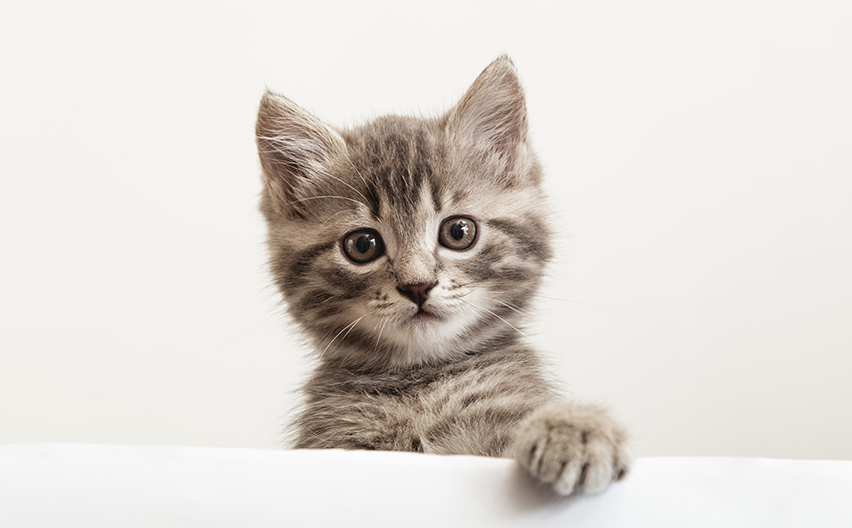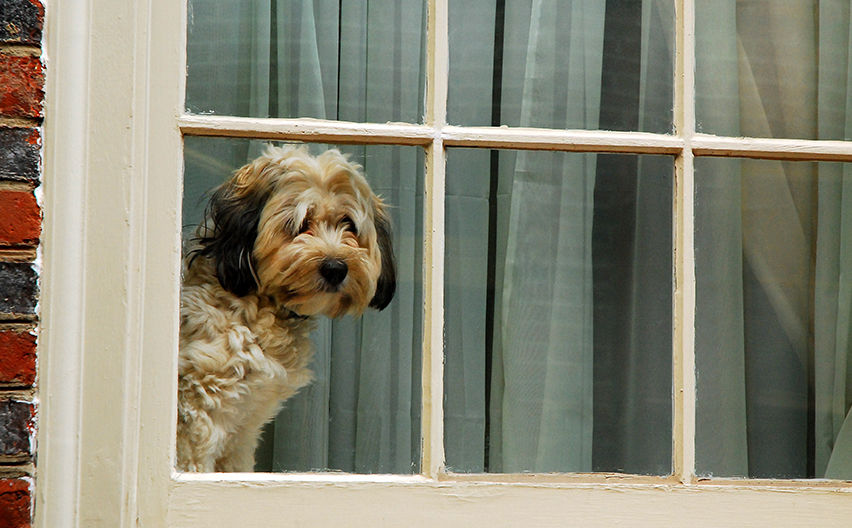

Dr Zhan Hong Lee is the lead veterinarian and manager at Our Vet Springvale, Victoria, and has a special interest in dermatology and orthopaedics. He believes that evidence-based veterinary medicine and artificial intelligence are the future of veterinary science.
Zhan Hong Lee spent the first year of his career in his hometown of Johor Bahru in Malaysia, then moved back to Melbourne to pursue a career in shelter medicine, working with the RSPCA in Burwood for four years. He then joined Animal Aid in Coldstream as the veterinary director for two years. His family dog Lucky the Japanese Spitz was the main motivator for him to pursue a career as a veterinarian.
Was there a surge of people buying pets during the pandemic?
Although it is hard to quantify in a percentage, there has been an increase in pet ownership during the pandemic, and we saw more pets being adopted from animal shelters as well. This prompted a price increase and longer waiting periods for people to buy a new puppy or kitten from a breeder.
Do you think people considered the long-term when buying a pet, and how they would help the pet adjust post-lockdown?
Unfortunately, for a lot of people, buying a pet during the pandemic has been mainly driven by impulse. There is generally a lack of research on the species, breed and sex of the animal prior to purchase. Then there are questions about their understanding of the animal’s diet, toileting habits, exercise requirements and common health issues. The most disappointing aspect of all is the failure to appreciate that it is a 10-15-year commitment. That’s why you must fill in a questionnaire that will assess if you are suitable to adopt a new pet from any animal shelter in Australia. I believed the issue of adjustment to post-lockdown life became more apparent to many people as the pandemic changed. There was more awareness about the issue as social media took off and it helped significantly in educating the community, but there is a lot more work that needs to be done.
What can people expect to happen when they go back to the office full or part-time after being at home full-time with their pet?
Separation anxiety is certainly on top of the list, especially when the bond has been so close with the owner. It’s a bit like the first day of kindergarten when you have only been with Mum and Dad for the past three years of your life. Separation can then lead to other behavioural issues such as boredom, destructive behaviour, inappropriate toileting etc.
Health issues such as feline lower urinary tract disease is probably the most common side effect of anxiety in male cats. Bored dogs may start rummaging through rubbish bins or the pantry and eat something they shouldn’t.
Are certain pets more susceptible than others?
Indoor dogs will develop the closest bond with their owner/s and therefore suffer more than outdoor dogs. Cats are less likely to experience separation anxiety when compared to dogs as they are naturally more independent than dogs. They don’t need to be walked or toileted outside, and some cats are borderline nocturnal anyway. (Which is great as they might not even notice any difference when the owners are at work.)
Indoor cats are more likely to have anxiety compared to outdoor cats as they aren’t as confident and get easily scared by dogs barking, other cats outside the house, and the smell of other animals etc.
Rabbits are another species that display signs of anxiety that is commonly overlooked. They can thump aggressively, destroy their enclosure by biting and chewing on everything and some will even stop eating when they are extremely anxious.

What are the signs to look out for that suggest a pet isn’t copying with the ‘new’ normal?
The display of abnormal behaviour is the easiest to be identified. Excessive panting, yawning, crying, drooling and pacing restlessly can be seen in the early stages of anxiety. This may lead to aggressive digging, chewing at the door or even jumping through the window.
Is it likely that pets raised in isolation won’t be as sociable around other people and animals?
This is true for many species of animals, including humans. It was a lot harder to provide a sociable environment during lockdown as it meant meeting someone from a different household. As the pandemic changed, it became easier again. Therefore, it can be as simple as having someone else in your home or taking your dog out for a walk. For dogs, participate in puppy classes, doggy day care or have a dog walker to walk them.
Cats are rarely sociable, but some may develop anxiety and are often best to be left alone in their safe environment. Give them space and time until they are ready to meet new people. I find that giving them adequate space and time is most important, then they will come to terms on how to interact by themselves.
New pet owners can help by reassuring pets positively with lots of pats and belly rubs. In more severe cases, some dogs and cats will require medication.
Pheromones/synthetic analogues of pheromones released by the queen or bitch may provide a calming effect naturally. Feliway for cats and Adaptil for dogs can be used as a plug-in diffuser, and Feliway also comes as a spray and Adaptil as a collar. Zylkene, which contains casein as a by-product of milk, is capable of calming newborns, like when they are suckling milk, and is an alternative natural product suitable for both dogs and cats. Tryptophan supplements may yield similar results as well.
Anti-depressants are also useful for pets as they reduce the anxiety level in the brain without sedation. Contrary to some belief, sedatives are rarely useful in managing anxiety as the animal is too drowsy to be able to comprehend what is happening around them and therefore will still be anxious after they recover from the sedation, and, in some cases, it may make the anxiety worse.
How can people help their pet adjust to being home alone for long periods?
Dogs are usually motivated by food/treats, therefore having a few Kong toys with little treats hidden in them will distract them for a few hours. Treat puzzles do the same, but some dogs are just too smart for them.
Cats are best left to their safe environment indoors with somewhere that they can hide comfortably and have access to their litter tray, food and water. Some cats may cope better if the TV or radio is playing in the background as well.
Having someone else checking up on your pets during the day or talking to them on a pet monitor will also help. I would recommend an initial gradual introduction, leaving them alone at home for 30-45 minutes initially and extending the hours slowly within the timeframe of 4-6 weeks.

How quickly can people expect that their pet will adapt?
Unfortunately, there isn’t a universal answer to this question. Every pet is an individual and they will all react differently. That’s why a gradual introduction of between 4-6 weeks is preferred.
What should people do if they realise they can’t cope with their new pet once they resume normal life activities and work?
I would recommend talking to friends, family, neighbours or even a boss. You never know if your boss has a soft spot for your pet. There are many rescue groups and special interest breed groups, which you can find online and contact them for advice or help with temporary fostering. Animal shelter such as RSPCA, Lost Dogs Home, AAPS or the Cat Protection Society may also help with rehoming them if they are suitable to be rehomed.
































.jpg?width=300&height=300&ext=.jpg)

.jpg?width=300&height=300&ext=.jpg)














